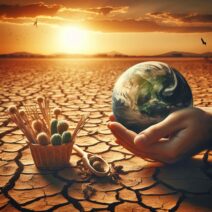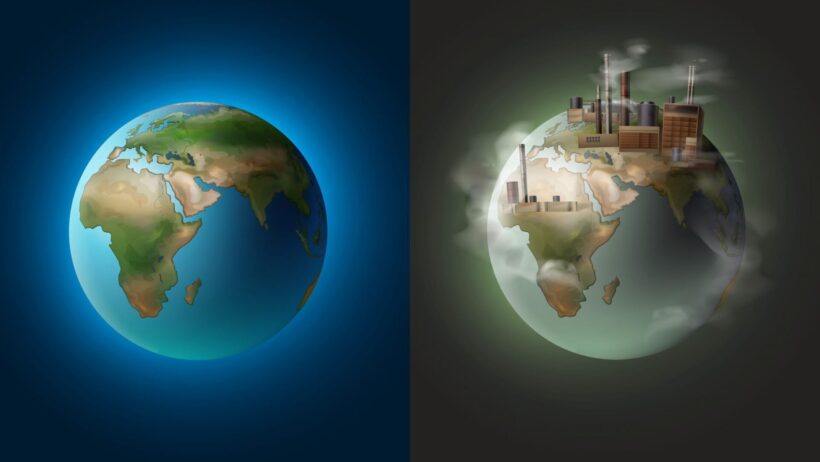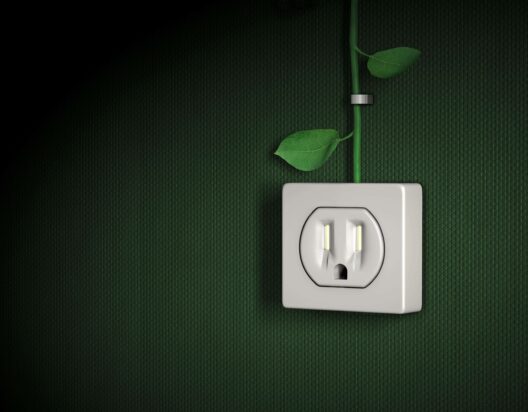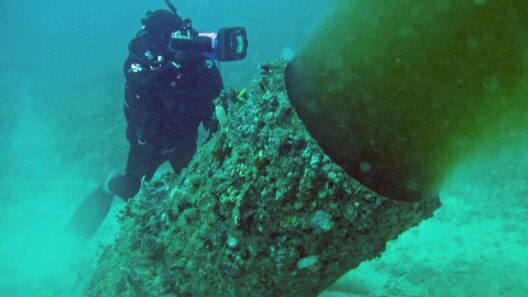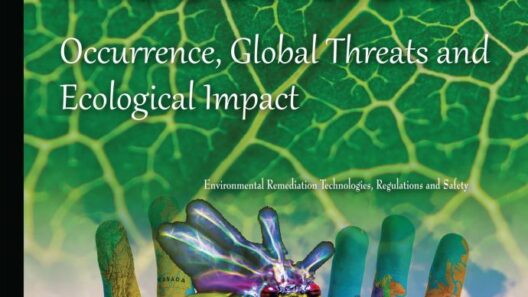The Earth, our magnificent blue planet, is marred by an insidious problem: pollution. But have you ever stopped to ponder the intricate connection between air and water pollution and the ominous specter of global warming? Let’s delve into this pressing matter and explore how these two forms of pollution don’t just coexist but exacerbate environmental degradation in a symbiotic relationship.
First, we need to understand the two main culprits: air pollution and water pollution. Air pollution is predominantly driven by industrial emissions, vehicle exhaust, and the burning of fossil fuels. This concoction of harmful particulates and toxic gases infiltrates the atmosphere and triggers a cascade of ecological consequences. Water pollution, on the other hand, is largely caused by runoff from agriculture, industrial discharges, and inadequate waste management. It contaminates our rivers, lakes, and oceans, presenting severe repercussions not only to aquatic life but also to the very fabric of our climate.
So how do air and water pollution accelerate global warming? As carbon emissions permeate the atmosphere, they trap heat and contribute to the greenhouse effect. The repercussions of such actions extend beyond just atmospheric warming; they intertwine with water pollution in unexpected ways. For instance, warmer water temperatures due to rising air temperatures can lead to harmful algal blooms, subsequently harming marine ecosystems and diminishing water quality. Thus, the connection between these two types of pollution is not merely coincidental; it is a complex web of interactions that magnifies the challenges we face.
When considering air pollution, one cannot overlook greenhouse gases such as carbon dioxide (CO2) and methane (CH4). These gases are released in substantial quantities from various sources, including agriculture, landfills, and fossil fuel combustion. Interestingly, methane is significantly more effective than CO2 at trapping heat in the atmosphere, having a warming potential over 25 times greater over a century. As a consequence, the liberation of methane from polluted water bodies – which often occurs due to organic matter decomposition in hypoxic conditions – adds another layer to an already precarious situation.
But the narrative doesn’t end here. Water pollution plays a crucial role in the earth’s carbon cycle. Healthy water bodies regulate atmospheric CO2 levels through processes like photosynthesis performed by aquatic plants and phytoplankton. However, when pollutants infiltrate these ecosystems, they can lead to a reduction in biodiversity, effectively stifling the capacity of these natural systems to sequester carbon. A drop in aquatic plant life means that less CO2 is absorbed, causing even more greenhouse gases to accumulate in the atmosphere.
Moreover, the thermal expansion of oceans due to increased atmospheric temperatures compounds the issue further. As the oceans warm, they hold less dissolved oxygen, creating an environment where anaerobic bacteria thrive, leading to the release of even more methane. This vicious cycle exacerbates global warming and creates a hostile habitat for marine life, showcasing the delicate balance that the planet maintains.
Now, let’s ponder: what can we do to sever this detrimental cycle? The challenge lies not just in mitigating emissions but in addressing pollution holistically. Cities can implement cleaner air policies, transitioning toward renewable energy sources and enhancing public transportation systems to reduce vehicular emissions. Agricultural practices can be reformed to minimize runoff and promote sustainable farming methods that do not compromise soil and water quality. By adopting such measures, it is possible to create a ripple effect that will benefit the climate overall.
Nevertheless, individuals also hold immense power in this collective challenge. Simple acts, like conserving water and energy, can contribute significantly to the larger goal of reducing pollution. Community engagement and educational initiatives can further incite action, galvanizing citizens to be more environmentally conscious. However, while these localized solutions are noble, they must be coupled with stringent legislation addressing industrial emissions and water quality management.
When we consider the psychological aspect of pollution, it is essential to remember that the narrative can often feel overwhelmingly negative. It’s easy to feel discouraged by the daunting statistics associated with pollution and climate change. However, this is where innovation and technology can play a pivotal role. For instance, advancements in air filtration systems and wastewater treatment technologies can turn the tide, allowing us to reclaim and restore our air and water quality. The potential for green technology to provide solutions is immense.
Yet, progress requires a concerted effort at all societal levels – government, industry, and individual actions must converge to establish a sustainable future. Enthusiastic participation in grassroots movements, advocating for policies that prioritize clean air and water, can signal to policymakers that the populace demands change. It challenges the status quo and exposes the corrosive connection between pollution and climate change.
In conclusion, polluted air and water are not isolated issues; they are intertwined threads in the fabric of global warming. The duality of these pollutants acts as both an accelerant for climate change and a symptom of broader environmental neglect. To reclaim our planet from this polluted fate, a unified approach combining individual initiative, technological advancement, and sweeping policy reform is imperative. The question we must ask ourselves: are we ready to rise to the challenge and redefine our relationship with the Earth? The answer could very well decide the fate of our planet for generations to come.


